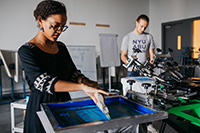-
Academics
-
Admissions
 Your journey to NYUAD starts here. Attend an application workshop or information session.Admissions Events
Your journey to NYUAD starts here. Attend an application workshop or information session.Admissions Events -
Research
-
Campus Life
 Live the possibilities. Be part of a dynamic community of students from over 115 countries.Take a Tour
Live the possibilities. Be part of a dynamic community of students from over 115 countries.Take a Tour - Public Programs
-
About
Exceptional education. World class research. Community-driven.Our Story
- News
- Events
- Social Media Directory
- Press Room
-
- Torch at NYUAD
- Faculty
- Current Students
- Alumni
- عربي
Tamas Aujeszky
PhD Candidate in Electrical Engineering
Affiliation: NYU Abu Dhabi
Education: BA, New York University Abu Dhabi; MA, New York University
Research Areas: Haptic Modeling; Infrared Thermography; Machine Learning; Image Processing
Tamas is a PhD Candidate in Electrical Engineering at NYU Tandon School of Engineering. His primary research interests include haptic modeling, infrared thermography, machine learning, and image processing.
With a special mathematics background from high school, Tamas signed up to be a member of the inaugural class of New York University Abu Dhabi, where he earned a B.S. in Electrical Engineering with a Summa Cum Laude distinction. His capstone project focused on a real-time Arabic Sign Language Interpreter for people suffering from hearing impairment. He continued on this path at the New York University Tandon School of Engineering where he earned an M.S. In Electrical Engineering, taking several courses in signal processing.
Tamas is a recipient of the New York University Global PhD Student Fellowship, and he is currently conducting his PhD research at New York University Abu Dhabi. He is expected to graduate in the summer of 2019. His research asks the question: what if you could record the material properties of objects from a distance? It would certainly help with robots to know how to properly grab delicate objects, and even enable futuristic technologies such as haptically mapping a scene intended to be showcased in multimodal VR experiences. The Haptic Eye project uses infrared thermography and machine learning to achieve this, and with several publications in top-tier journals and conferences, the technology is on the way to coming to fruition.
Research
Haptic Eye - This project presents a novel method for modeling the thermal properties of unknown materials using laser thermography without physical contact between the sampling instrument and the sampled material. The goal of this project is to produce a way to measure thermal properties of materials based on their response to thermal excitation. Such a procedure would allow for characterization and identification of materials that can lead to creating haptic models based on the identified materials and apply appropriate values to their haptic properties.
